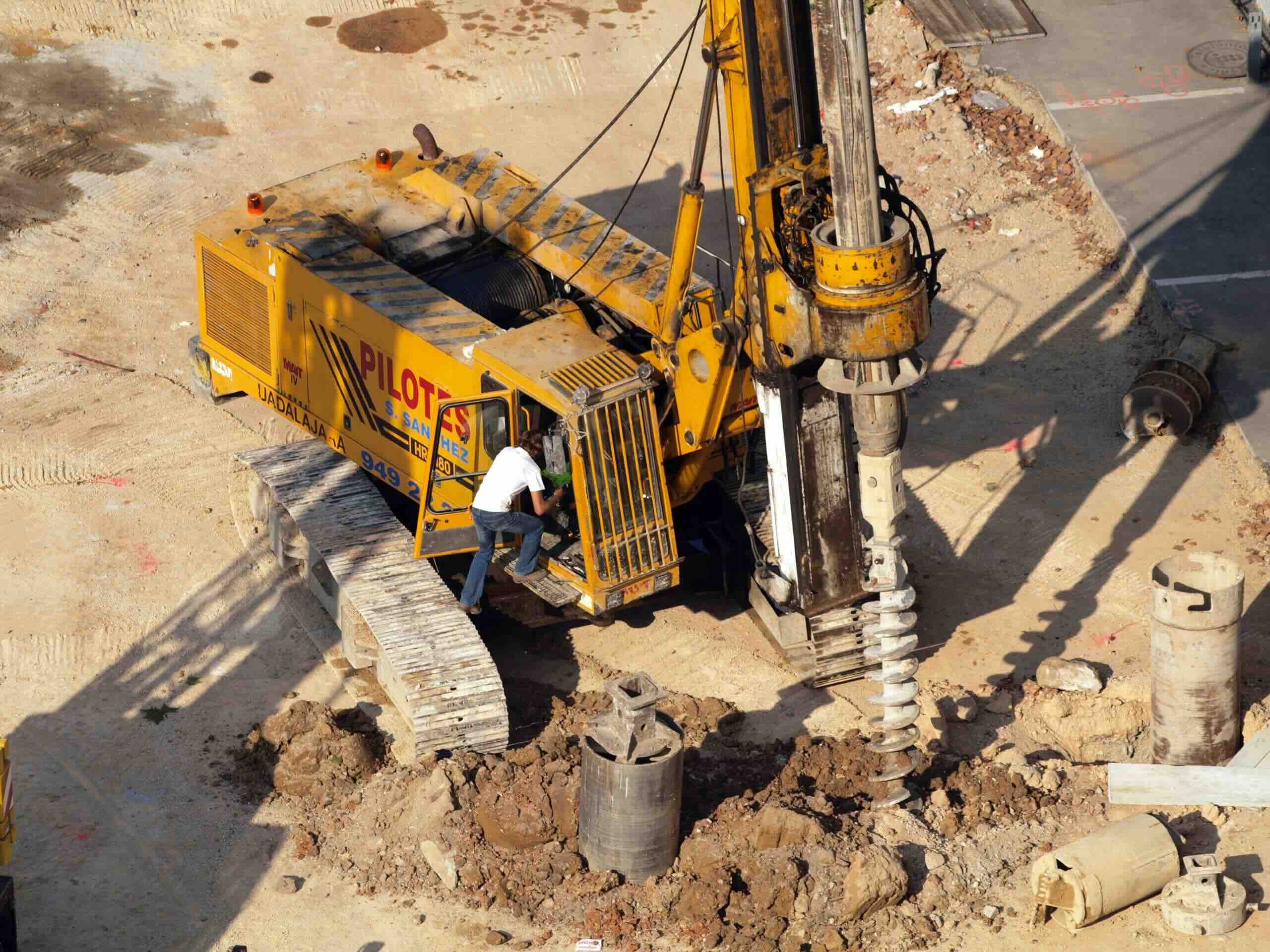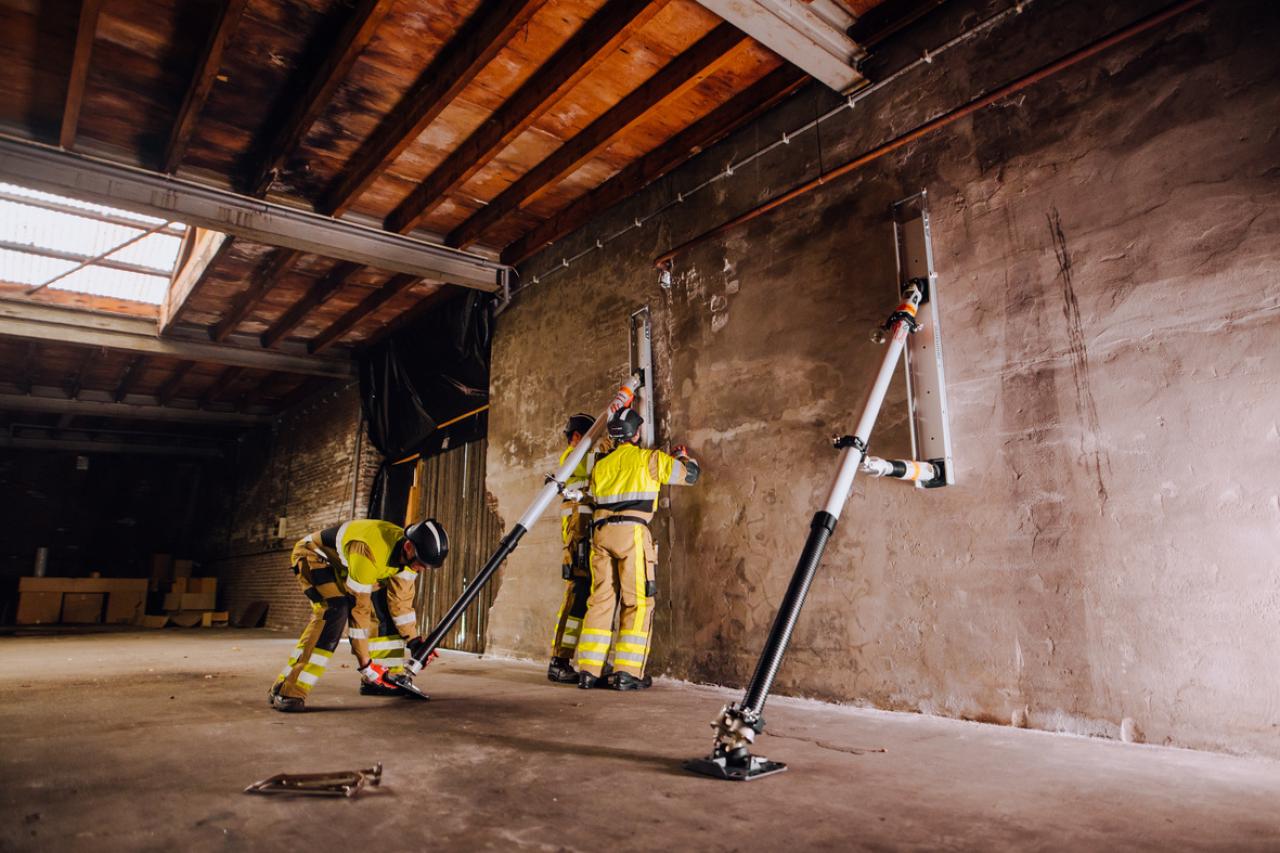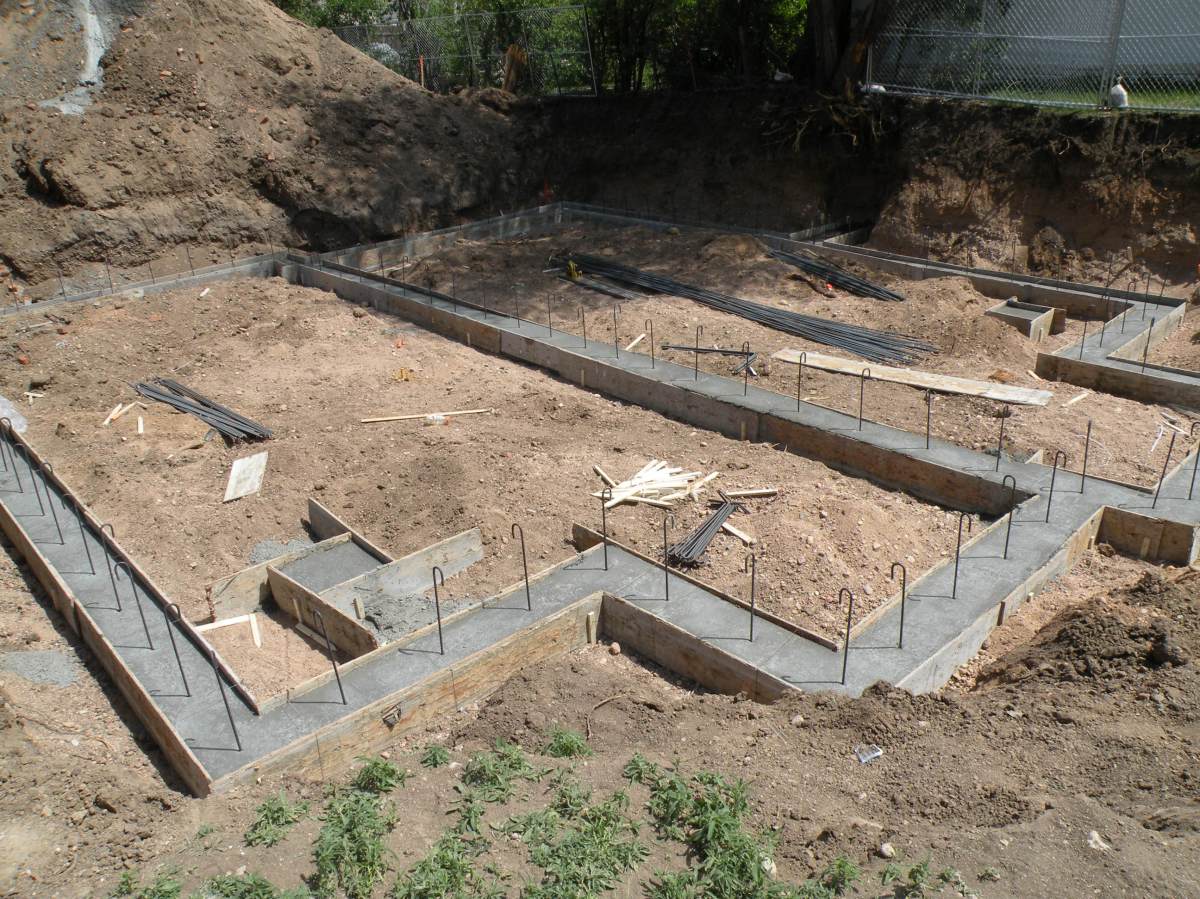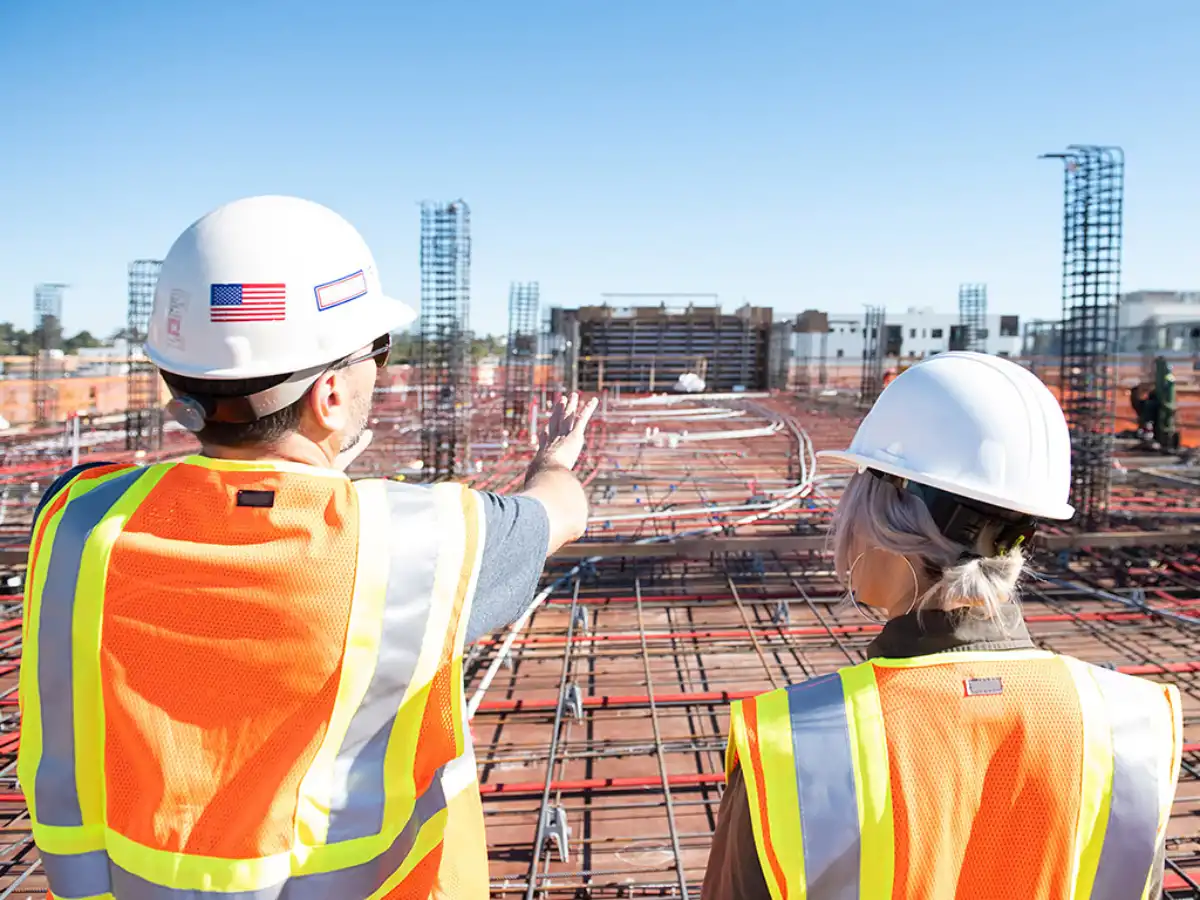Home>diy>Building & Construction>What Is An AIA In Construction


Building & Construction
What Is An AIA In Construction
Modified: January 9, 2024
Learn about an AIA (American Institute of Architects) in the context of building construction and how it impacts the industry. Gain insights into the role and significance of AIA in construction projects.
(Many of the links in this article redirect to a specific reviewed product. Your purchase of these products through affiliate links helps to generate commission for Storables.com, at no extra cost. Learn more)
Introduction
In the world of construction, there are numerous processes, documents, and organizations involved in ensuring successful project completion. One such organization that plays a significant role in the construction industry is the American Institute of Architects (AIA). As a widely recognized professional association, the AIA is dedicated to enhancing the profession of architecture and promoting the value of good design.
However, the AIA’s influence goes beyond architecture, as it also provides standardized documents and contracts that are commonly used in the construction industry. These documents, known as AIA documents, serve as a framework for establishing agreements and relationships between the various parties involved in a construction project.
Understanding the role and importance of AIA in construction is essential, whether you are a contractor, architect, owner, or any other stakeholder in the construction process. In this article, we will explore the definition and purpose of AIA in construction, the benefits it offers, and the use of AIA documents in construction projects.
Let’s dive into the world of AIA and see how it influences the construction industry!
Key Takeaways:
- AIA provides standardized documents and promotes best practices, fostering collaboration and transparency in construction projects, ultimately leading to successful outcomes and positive relationships among stakeholders.
- By incorporating provisions for dispute resolution and ethical conduct, AIA documents facilitate fair and timely resolutions, minimizing the impact on project progress and maintaining positive relationships among project participants.
Read more: What Is AIA Billing In Construction
Definition of AIA in Construction
The acronym “AIA” stands for the American Institute of Architects, which is a professional association for architects based in the United States. Founded in 1857, the AIA’s primary mission is to support and advance the field of architecture, while also advocating for the value of design excellence.
While the AIA is primarily associated with the architectural profession, its impact extends beyond architecture. In the realm of construction, the AIA plays a vital role by providing standardized documents, known as AIA documents, that are widely used in the industry. These documents help establish the legal and contractual framework for construction projects, ensuring clarity and consistency in the agreements between the various project stakeholders.
The AIA documents cover a wide range of construction-related topics, including contracts, design and construction administration, project management, and dispute resolution. They are designed to provide a fair and balanced approach to project management and facilitate effective communication between project participants.
It is important to note that while the AIA provides standardized documents, their use is not mandatory in the construction industry. However, many professionals and organizations choose to utilize AIA documents due to their well-established reputation, comprehensive content, and familiarity among industry stakeholders.
Now that we have a clear understanding of what AIA stands for and its involvement in the construction industry, let’s explore why AIA is essential in construction projects.
Purpose of AIA in Construction
The primary purpose of the AIA in the construction industry is to facilitate better project management, ensure fairness, and minimize disputes among the various stakeholders involved in construction projects. The AIA achieves this by providing a framework of standardized documents that establish clear roles, responsibilities, and expectations for all parties.
One of the key purposes of AIA documents is to create a legally binding agreement between the owner of the project, the architect, and the contractor. These documents outline the scope of work, schedule, payment terms, and other essential project parameters. By providing a consistent and widely accepted standard, AIA documents help alleviate potential conflicts and disputes that may arise during the project lifecycle.
Furthermore, AIA documents promote transparency and accountability among all project participants. They outline the obligations and responsibilities of each party, including design professionals, contractors, subcontractors, and suppliers. This clarity helps ensure that everyone involved understands their role and contributes to the project’s success.
AIA documents also address issues related to project administration, such as change orders, request for information (RFI), and project closeout. They provide guidelines and procedures for handling these matters in a fair and systematic manner, reducing the likelihood of misunderstandings or delays.
Another essential purpose of AIA in construction is to protect the interests of all parties involved. The documents provide provisions for insurance, warranties, and dispute resolution methods, aimed at safeguarding the rights and mitigating potential risks for architects, contractors, and owners.
Moreover, the AIA continuously updates and revises its documents to reflect new industry practices, legal requirements, and evolving technologies. This ensures that the AIA documents remain relevant and current, adapting to the changing needs of the construction industry.
In summary, the purpose of AIA in construction is to provide standardized documents that establish clear agreements, promote transparency and accountability, protect the interests of all parties, and facilitate effective project management. By utilizing AIA documents, construction projects can reduce disputes, enhance communication, and ultimately contribute to the overall success of the project.
Benefits of AIA in Construction
The utilization of AIA documents and the involvement of the AIA in construction projects offer several significant benefits to all stakeholders involved. These benefits contribute to the smooth execution of projects, improved communication, and a greater likelihood of successful project delivery. Let’s explore some of the key benefits of AIA in construction:
- Consistency and Familiarity: AIA documents provide a standardized framework that is widely recognized and accepted in the construction industry. This consistency allows for familiarity among project participants and reduces the potential for misunderstandings or disputes arising from different contract formats.
- Clear and Well-Defined Roles: AIA documents clearly outline the roles and responsibilities of each project participant. This clarity helps to establish expectations and ensures that everyone understands their obligations, minimizing the risk of miscommunication or confusion.
- Efficient Project Management: By utilizing AIA documents, project management becomes more efficient and streamlined. The standardized formats provide a comprehensive framework for tasks such as project scheduling, payment terms, and change orders, helping to manage the project effectively and avoiding delays or cost overruns.
- Reduced Risk of Disputes: The AIA documents include provisions and procedures for dispute resolution, helping to minimize the risk of conflicts between project participants. The defined process allows for the timely resolution of issues, promoting a collaborative and productive environment.
- Enhanced Legal Protection: AIA documents contain provisions that protect the legal rights and interests of all parties involved in the construction project. These provisions cover areas such as insurance, warranties, and liability, providing a level of legal protection and adding a sense of security for all stakeholders.
- Adaptability to Changing Industry Standards: The AIA regularly updates its documents to reflect changes in industry practices, legal requirements, and emerging technologies. This adaptability ensures that AIA documents remain relevant and reflect current industry standards.
The benefits of AIA in construction extend to all participants, including owners, architects, contractors, subcontractors, and suppliers. By utilizing AIA documents, project stakeholders can navigate the complexities of the construction process more effectively, promote collaboration and open communication, and contribute to the overall success of the project.
AIA Documents in Construction
AIA documents are a collection of standardized forms and contracts that are widely used in the construction industry. These documents provide a comprehensive framework for establishing agreements and relationships between project participants, ensuring clear communication and minimizing potential disputes. Let’s take a closer look at some of the key AIA documents commonly used in construction:
- AIA Contract Documents: The AIA contract documents are the foundation of the AIA’s document library. They include forms and agreements that establish the legal relationship between the owner, architect, and contractor. These documents outline the project scope, schedule, payment terms, and other essential project parameters. Some commonly used AIA contract documents include the A101, A102, A201, and A401.
- AIA General Conditions: The AIA General Conditions document (A201) is often incorporated into the contract documents and establishes the general terms and conditions that govern the construction project. It covers areas such as project administration, dispute resolution, insurance requirements, and contractor’s responsibilities.
- AIA Design-Build Documents: For design-build delivery projects, the AIA provides specific documents that address the unique requirements of this project delivery method. These documents outline the roles, responsibilities, and relationships between the design-builder, owner, and other project participants.
- AIA Construction Management Documents: The AIA offers construction management documents that are tailored for projects utilizing the construction management delivery method. These documents establish the roles and responsibilities of the construction manager, owner, architect, and other project participants.
- AIA Owner-Architect Documents: These documents establish the contractual relationship between the owner and the architect. They outline the architect’s scope of services, compensation, and other essential project-specific requirements.
- AIA Owner-Contractor Documents: These documents address the contractual relationship between the owner and the contractor. They outline the contractor’s responsibilities, project schedule, payment terms, and other project-specific requirements.
- AIA Miscellaneous Documents: The AIA also provides miscellaneous documents that cover various aspects of construction projects. These include documents for sustainable projects, digital data protocols, and construction industry standards.
It is important to note that the selection and use of specific AIA documents depend on the nature of the project, contractual relationships, and the specific requirements of the parties involved. Additionally, the AIA regularly updates and revises its document library to adapt to the changing needs of the construction industry.
By utilizing AIA documents, construction projects can benefit from increased clarity, consistency, and legal protection. These standardized documents help establish a common understanding among project participants, minimizing potential conflicts and promoting successful project delivery.
When working in construction, it’s important to understand that AIA stands for the American Institute of Architects. AIA contracts are commonly used in the industry to define the roles and responsibilities of all parties involved in a construction project. Familiarize yourself with AIA contracts to ensure clear communication and understanding throughout the project.
Read more: What Is Pre-Construction In Construction
Contractual Elements in AIA
AIA documents provide a comprehensive framework for establishing contractual relationships in construction projects. These documents include various contractual elements that help define the rights, responsibilities, and obligations of the parties involved. Understanding these contractual elements is essential for ensuring a fair and effective construction agreement. Here are some key contractual elements commonly found in AIA documents:
- Scope of Work: The scope of work defines the specific tasks, services, and deliverables that each party is responsible for. It clearly outlines the work to be performed and sets the expectations for project completion.
- Project Schedule: AIA documents often include provisions related to project timelines, milestones, and completion dates. These contractual elements establish the timeframe for completing different phases of the project and help ensure that all parties are aligned with the project timeline.
- Payment Terms: Contractual elements related to payment terms outline how and when payments will be made. They specify the contract sum, define the payment schedule, and specify any penalties or incentives related to timely payment.
- Changes and Modifications: Construction projects often undergo changes and modifications throughout their lifecycle. AIA documents address this by including provisions that outline the process for handling change orders, differences in cost and time, and approvals required for making changes to the project scope.
- Dispute Resolution: Disputes are common in construction projects, and AIA documents address this by including contractual elements related to dispute resolution. These provisions outline the procedures for resolving disputes, including negotiation, mediation, or arbitration, and help parties come to a fair resolution without resorting to litigation.
- Insurance and Liability: AIA documents address the insurance requirements for construction projects and the allocation of liability among the parties. They define the types and amounts of insurance coverage needed and outline the limits of each party’s liability.
- Termination of the Contract: In some cases, a construction contract may need to be terminated before completion. AIA documents include provisions that specify the grounds for termination and the process to be followed if termination becomes necessary.
These are just a few examples of the contractual elements found in AIA documents. The specific elements and provisions included may vary depending on the document and the project’s unique requirements. It is crucial for all parties involved to carefully review and understand these contractual elements before entering into an agreement to ensure that their rights and obligations are clearly defined.
By including these contractual elements in AIA documents, construction projects can establish a solid foundation for successful collaboration, minimize misunderstandings, and reduce the risk of disputes throughout the project’s lifecycle.
Use of AIA in Construction Projects
The use of AIA documents in construction projects offers numerous advantages for all stakeholders involved. These documents provide a standardized and widely accepted framework that promotes clarity, transparency, and effective project management. Let’s explore the key ways in which AIA is utilized in construction projects:
- Establishing Clear Agreements: AIA documents serve as a foundation for creating legally binding agreements between project participants. These documents define the roles, responsibilities, and expectations of each party, ensuring a common understanding from the outset.
- Minimizing Disputes: By utilizing AIA documents, construction projects can minimize the risk of disputes. The standardized formats and clear provisions in these documents help prevent confusion and provide guidelines for addressing issues that may arise during the project.
- Facilitating Effective Communication: AIA documents promote open and effective communication among project participants. The documents provide a consistent language and format, facilitating clear and efficient communication related to project schedules, change orders, payments, and other significant project aspects.
- Ensuring Consistency and Familiarity: Using AIA documents ensures consistency and familiarity in construction projects. Many industry professionals are familiar with AIA documents, simplifying the negotiation and execution processes. Consistent use of these documents also helps parties compare and evaluate different projects more easily.
- Aiding Project Documentation: AIA documents assist in maintaining proper project documentation. They provide a structured framework for recording changes, documenting approvals, and managing project records. This systematic approach helps maintain a comprehensive project history and provides a reliable reference for future project needs.
- Adapting to Various Project Delivery Methods: AIA documents are adaptable to different project delivery methods, such as design-bid-build, design-build, and construction management. The availability of specific documents tailored to these delivery methods allows project participants to align with the appropriate processes and contractual arrangements for their specific project type.
- Enhancing Legal Protection: Utilizing AIA documents provides legal protection for all parties involved in construction projects. The well-defined provisions in these documents address issues such as liability, indemnification, and dispute resolution, reducing the potential for legal complexities and offering a level of risk management.
It is important to note that the use of AIA documents is not mandatory in the construction industry, and parties can choose to develop their own contracts or utilize other standardized forms. However, the widespread acceptance and familiarity with AIA documents make them a practical choice for many construction projects.
By utilizing AIA documents, construction projects benefit from clear agreements, effective communication, minimized disputes, and enhanced legal protection. The standardized nature of these documents helps promote collaboration and successful project outcomes, ultimately contributing to the overall success of the construction project.
AIA and Project Management
The American Institute of Architects (AIA) plays a significant role in project management within the construction industry. By providing standardized documents and guidelines, the AIA helps establish effective project management practices and promotes successful project outcomes. Let’s explore the relationship between AIA and project management in more detail:
Standardized Project Management Framework:
AIA documents serve as a standardized framework for project management in construction projects. These documents outline the roles and responsibilities of each project participant, define project milestones, establish procedures for communication, change management, and dispute resolution, and provide guidance for project administration. By providing a consistent and widely accepted framework, AIA documents contribute to efficient project management and facilitate collaboration among project participants.
Clear Communication and Documentation:
AIA documents promote clear communication and documentation throughout the project lifecycle. The standardized formats and provisions in these documents ensure that critical project information, such as project scope, schedules, specifications, and responsibilities, is clearly communicated and documented. This facilitates effective project coordination, reduces misunderstandings, and helps mitigate potential risks or disputes.
Collaboration and Integration:
AIA documents emphasize collaboration and integration among the various project participants. The documents highlight the importance of teamwork, coordination, and cooperation to achieve project success. They establish procedures for coordination meetings, RFI (Request for Information) processes, and change order management, fostering an environment of collaboration and integrated project delivery.
Change Management:
Change is an inherent part of construction projects, and effective change management is crucial for project success. AIA documents address change management processes, including the documentation of changes, evaluation of impacts on cost and schedule, and the necessary approvals. By providing a clear and well-defined change management framework, AIA documents help manage changes in a controlled and organized manner, minimizing disruption and ensuring project continuity.
Risk Management:
AIA documents incorporate provisions that help mitigate risks in construction projects. From insurance requirements and indemnification clauses to dispute resolution procedures, these documents address potential risks and provide mechanisms to manage them effectively. By incorporating risk management measures, AIA documents contribute to the overall success and profitability of construction projects.
Professionalism and Ethical Conduct:
The AIA emphasizes professionalism and ethical conduct in project management. AIA documents encourage adherence to high standards of professional ethics for architects, contractors, and other project participants. By promoting professionalism, integrity, and accountability, AIA documents set the stage for successful project management and build trust among project stakeholders.
By providing standardized documents, promoting clear communication and documentation, facilitating collaboration, addressing change management, mitigating risks, and upholding professionalism, AIA significantly contributes to effective project management in the construction industry. The utilization of AIA documents establishes a strong foundation for successful project outcomes, ensuring that projects are completed on time, within budget, and to the satisfaction of all stakeholders involved.
AIA and Dispute Resolution
Disputes can arise in any construction project, and resolving them in a fair and timely manner is crucial for successful project outcomes. The American Institute of Architects (AIA) recognizes the importance of effective dispute resolution and incorporates provisions in its documents to address this aspect. AIA documents provide a framework for dispute resolution that promotes collaboration, reduces costs, and helps parties come to a mutually satisfactory resolution. Let’s explore how AIA facilitates dispute resolution in the construction industry:
Provisions for Alternative Dispute Resolution (ADR):
AIA documents commonly include provisions for various forms of Alternative Dispute Resolution (ADR), such as negotiation, mediation, and arbitration. These methods provide alternatives to traditional litigation, offering parties a less costly and time-consuming means of resolving disputes. By including ADR provisions, AIA documents encourage parties to resolve disagreements in a collaborative and cooperative manner, minimizing the need for formal legal proceedings.
Mediation:
AIA documents often require parties to attempt mediation before initiating arbitration or litigation. Mediation involves a neutral third party facilitating discussions between the disputing parties with the goal of reaching a mutually acceptable resolution. Mediation helps promote open communication, enables exploration of creative solutions, and allows parties to maintain control over the outcome. Engaging in mediation can save time and costs associated with formal legal proceedings and foster a more amicable relationship between the parties involved.
Arbitration:
In cases where mediation fails to resolve the dispute, AIA documents commonly include provisions for binding arbitration. Arbitration involves presenting the dispute to an impartial arbitrator or panel of arbitrators who render a final and binding decision. AIA documents outline the arbitration process, including selection of arbitrators, the timeline for rendering the decision, and procedures for presenting evidence and arguments. Arbitration offers a more streamlined and expedient process compared to litigation, helping parties reach a resolution more efficiently.
Dispute Review Boards:
Some AIA documents include provisions for the establishment of Dispute Review Boards (DRBs). A DRB is a panel of neutral experts appointed at the beginning of a project to monitor progress, anticipate disputes, and provide recommendations for resolving disagreements. The DRB’s goal is to prevent disputes from escalating, foster communication among project participants, and resolve conflicts in a proactive and non-adversarial manner.
Collaborative Approach:
AIA’s approach to dispute resolution emphasizes collaboration and emphasizes the resolution of conflicts through negotiation and mutually acceptable outcomes. By incorporating provisions for ADR methods in their documents, AIA encourages parties to resolve disputes in a non-confrontational manner, place importance on maintaining ongoing relationships, and minimize the financial and emotional costs associated with litigation.
Protecting Legal Rights:
While the AIA promotes the use of ADR methods, it also ensures that parties’ legal rights are protected. AIA documents include provisions that address insurance requirements, limitations of liability, indemnification, and other legal aspects. These provisions help ensure that parties can enforce their contractual rights and seek redress if necessary.
By incorporating provisions for ADR, promoting collaboration, utilizing mediation and arbitration, encouraging the use of Dispute Review Boards, and ensuring the protection of legal rights, AIA documents play a significant role in facilitating the resolution of disputes in the construction industry. They provide a structured framework that helps parties navigate conflicts and reach fair and satisfactory resolutions, ultimately contributing to the success and profitability of construction projects.
Read more: What Is Construction
Conclusion
The American Institute of Architects (AIA) plays a crucial role in the construction industry by providing standardized documents, promoting best practices, and fostering collaboration among project participants. The use of AIA documents offers numerous benefits, from establishing clear agreements and facilitating effective project management to minimizing disputes and enhancing legal protection.
AIA documents provide a consistent and widely accepted framework for establishing contracts, defining project scope, managing change, and addressing disputes. These documents promote transparency, open communication, and clear documentation, ensuring that all parties involved have a common understanding of their roles, responsibilities, and expectations.
The AIA’s involvement in project management extends beyond contracts and documents. It promotes professionalism, ethical conduct, and a collaborative approach to project delivery. By encouraging adherence to these high standards, the AIA helps foster a positive and productive working environment that leads to successful project outcomes.
Additionally, the AIA recognizes the importance of effective dispute resolution in construction projects. AIA documents incorporate provisions for Alternative Dispute Resolution (ADR), such as negotiation, mediation, and arbitration, which offer less costly and time-consuming alternatives to traditional litigation. By providing a structured framework for resolving disputes, the AIA facilitates timely and fair resolutions, minimizing the impact on project progress and maintaining positive relationships among project participants.
In summary, the AIA’s influence in the construction industry is far-reaching. Through its standardized documents, promotion of best practices, and emphasis on collaboration and ethical conduct, the AIA contributes to the overall success of construction projects. By utilizing AIA documents and following the principles set forth by the organization, project participants can navigate the complexities of construction projects more effectively, reduce disputes, and achieve successful project outcomes.
Whether you are an architect, contractor, owner, or any other stakeholder in the construction process, understanding and utilizing AIA documents can bring numerous benefits to your construction projects. By embracing the guidelines and frameworks provided by the AIA, you can promote clarity, efficiency, and fairness in your construction endeavors, leading to the successful completion of projects while nurturing positive relationships among all involved parties.
Frequently Asked Questions about What Is An AIA In Construction
Was this page helpful?
At Storables.com, we guarantee accurate and reliable information. Our content, validated by Expert Board Contributors, is crafted following stringent Editorial Policies. We're committed to providing you with well-researched, expert-backed insights for all your informational needs.














0 thoughts on “What Is An AIA In Construction”